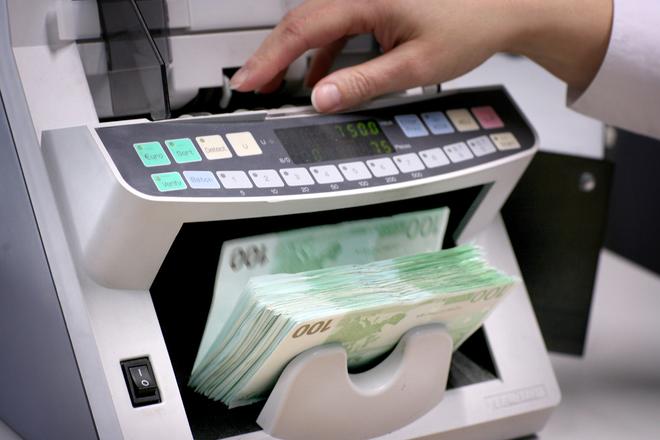IN EARLY September, the European Commission (EC) issued a report on the so-called VAT gap based on figures from 2013, and found that Slovakia failed to collect 34.9 percent of what it should in value-added tax. The Finance Ministry is seeking to emphasize that tax collection in improving.
“In comparison with 2012, we have experienced a significant decrease of the VAT gap in 2013,” Finance Ministry spokeswoman Alexandra Gogová told The Slovak Spectator, “thus better collection brought additional revenues of €219 million.”
The EC defines the VAT gap as an indicator of the effectiveness of VAT enforcement and compliance measures based on the difference between the amount of VAT actually collected and the VAT Total Tax Liability which is an estimated amount based on the VAT legislation and related regulations.
Slovakia is one of 15 member states that improved their VAT figures from 2012. Only Romania and Lithuania recorded more tax evasion than Slovakia in 2013, according to the EC report.
“VAT paying entrepreneurs acknowledged less taxes in 2013 than in 2015 in which even the volume of VAT refunds is lower,” Supreme Audit Office (NKÚ) spokeswoman Daniela Bolech Dobáková told The Slovak Spectator. The biggest shortages occurred in agriculture, construction, wholesale and retail trade and public catering.
Improved VAT collection in the following years has been confirmed by the report on 2014’s collection of VAT in Slovakia elaborated by the Institute of Financial Policy (IFP) a government think tank, according to which the VAT gap decreased to 30 percent. Gogová said that such improvement brought the state budget an additional €646 million in tax revenues.
“But it remains true that compared with most EU countries there is a relatively large space for improved VAT collection in Slovakia,” Gogová said.
Efficient tools
Mandatory submission of VAT ledger statements in an electronic form would be among the most effective new measures for fighting VAT evasion, as confirmed by statistics of the Financial Administration (FS).
“The 17.23 percent of transactions in more than 1.65 million processed ledger statements between January 2014 and January 2015 account for risky transactions,” Patrícia Macíková, spokeswoman of FS, told The Slovak Spectator.
Ledger statements were included in the action plan against tax frauds established three years ago that also came with the obligation that risky entities pay a financial guarantee before registration for a VAT number and cancellation of the VAT registrations of non-communicating payers.
Additionally, the NKÚ’s Dobáková pointed out that cooperation with the Czech Republic has increased efficiency in this field as the western neighbour is going to introduce a similar electronic ledger statement requirement in 2016.
“In August, the chairman of NKÚ and president of the Supreme Audit Office of the Czech Republic signed an agreement of parallel control of excise tax administration scheduled for the year 2016,” Dobáková said.
However, two representatives of employers in Slovakia, the Republic Union of Employers (RÚZ) and the Federation of Employers’ Unions (AZZZ), have blamed ledger statements for increased administrative burden.
Martin Hošták, the secretary of RÚZ, told The Slovak Spectator that he questions how effective the new measures will be. Furthermore companies had to upgrade their information systems, according to Rastislav Machunka, vice-president of AZZZ.
Another anti-evasion project of the action plan is the so-called Tax Cobra, a special financial law enforcement unit composed of tax specialists, investigators and prosecutors, operating from July 2012. Macíková said that Tax Cobra has mainly intervened in cases of risky companies that are revealed by VAT ledger statements.
Through June 30, the inspections have found unjustified VAT refunds of €46 million, Macíková said. The worst offenders came from firms selling commodities like nickel, sugar, cereals, used cars, meat, wood, stone and wine.
Next steps
In the near future, the Finance Ministry plans to introduce further measures to reduce the VAT gap, including an analytics centre for the Financial Administration and police force, increased scrutiny of excise duties and a system of automatic notification to tax subjects, officials said.
Gogová also mentioned changing VAT payments in the construction sector beginning in 2016. This measure will cover the supply of construction work, the building or any part thereof on the basis of contract for work or another contract and goods with the installation or assembly if the assembly or installation are classified as construction work.
“A taxpayer shall not be obliged to pay VAT on the supply output but he draws up an invoice without VAT,” she said. “The recipient who must be also a taxpayer calculates VAT from the invoiced price and declares it in its VAT tax return for the relevant period.”
According to NKÚ, next year will bring reports for the operational management of processes within the framework of the Integrated Information System of the Financial Administration for tax administration and bi-directional communication between the Financial Administration and tax subjects.
“And, finally, by the end of 2019 there should be launched a comprehensive system of performance management in the financial administration,” Dobáková said.



 (source: Sme)
(source: Sme)